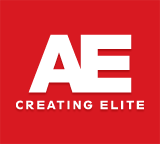By James Walker CCS, STM, BioSig, Master Trainer
Q: Why should I pay for your service when I can get a similar service elsewhere for cheaper?
A: Sometimes externals look similar but they really are not under critical scrutiny. An example wouldbe similar to this analogy. I can build or purchase a kit car that looks like a Lamborgini (a top Italian Performance Automobile) for $25,000 compared to the $250,000 of a real Lamborgini. They may appear identical but under critical testing and performance on the track the real Lamborgini does 0-60 in 3seconds, 1/4 mile in11 seconds, and has a top speed of 210 mph while the kit car does 0-60 in 6 seconds, ¼ mile in 14 seconds and has a top speed of 150mph with some luck. On the outside they look almost identical but on the track there is a vast difference.
There are many trainers and coaches who can improve performance via conditioning and strengthening programs but can or do they optimally develop the athletes potential (see our new website commentary article)? Can or have they taken someone who’s career, contract, signing bonus, and national or international ranking depends on them performing at the highest level not just taking one to two tenths of a second off of a 40 yd time. We specialize in optimizing an Athletes performance and we know that our results and success will speak for itself.
For example, AE Creating Elite individually and collectively has done that repeatedly with many athletes at the highest level. We’ve also trained and mentored some of the areas top trainers as well. Some of our clients include:
· NFL – Derek Cox (Jaguars, Chargers, & Vikings), Nick Sorenson (Rams, Jaguars, & Browns), Ed Thomas (Panther, & Jaguars), Regan Upshaw (Raiders, Redskins), Kevin Mitchell (49’rs, Saints, & Redskins), Renaldo Wynn (Panthers, Jaguars, & Redskins), Kato Sewanga (Redskins, Giants, & Colts), Leonard Stephens (Redskins), Steve Tate (Mountain Lions),
· Arena – Nate Daniels (Richmond)
· Semi-Pro - Marlow Morgan (Kings), Nick Sims (Kings), Scott Woodward (Kings), Luke Treaster (Kings), Payton Lamb (Kings), Jim Adkins (Kings), Jace Summer (Monarchs),
· Marathon – Marny Gilluly (Reebok)
Bodybuilding - Jackie Horton (MD State); Ed Taylor (MD State); Yaz Boyum (IFBB Pro).
· MLB - Mark Tugwell (Phillies),
· PGA – Woody Fitzhugh (PGA), Will Britt (Myrtle Pro Golf Academy),
· USAW - Cara Heads (USA Olympic Weight Lifter),
· Rugby – Jason Kallivocas, Ian Purcell, Raoul Socher
· Swimming – Peter Garrett ( Olympics)
· Triathlon – John Pellerito, Lonnie Crittenden, Chuck Sarich
· Fitness – Mary Perry ( ),
· Military - Amelia McDermott (USAF), Rachel Forrest VMI), Daniel Behne (USNA), Gavin Forrest (Duke/USA)’ Alex Schade (Duke/USA)
· Law Enforcement – Bill Kelmartin (Deputy Sheriff, First Sergeant); V. Forrest (*),
· Attorneys / Lobbiest – Bernie Dietz (Dietz Law), Jim Conzelman (Baker Hostetler), John McGeehan (McGeehan & Associates), Walter Perkins (Attorney & Inventor), Margaret Pfeiffer (Sullivan & Cromwell), Jim Ackers (Sullivan & Cromwell), Marcia Gelman (Winston & Straughn), Gloria Malkin (US Justice Dept), Ron Platt (McGuire Woods), Evelyn Hurwich (Circumpolar Conservation Union), Ken Crerar (Council Of Insurance Agents & Brokers), Mike Dorsey (),
· Ceo’s / Executives / Business Owners / Entrepreneurs – Yvette Lawless (Living Color), Lonnie Gaddy (Entrepreneur), Carlos Gavidia (Direct Connect), Kay Kendall (Centennial), Marc Palumbo (US Data Works), Joe Plumpe (Studio 39), CW Gilluly (Comtex), Greg Farmer (Nortel), Kay Kendall (Washington Ballet Board President), David Levine (Consultant), Patricia Ghiglino Lopez (Professional Restoration), Bill Miller (Washington Post), Jean Neal (Senate Chief Of Staff), Eugene Boyd (Library Of Congress),
· HS & College :
§ Baseball – Grant Flowers (Carolina Coastal), Kyle Howell (Notre Dame Acadamy/Wagner C), Matt Burch (Notre Dame Acadamy/Naval Academy), Brett Spencer (Notre Dame Acadamy/Lewis Clarke St U), Joe Strange (Randolph Macon C), Mark Tugwell (VA Tech), Nick Grillo (Notre Dame Acadamy/William & Mary),
§ Basketball - Chris Kearney (Westfield HS/Catholic U), Drake Diamond (Centreville HS/Wheaton C), Andrew Lawless (Westfield HS), Jeff Baxter (U of MD), Steve Rivers (U of MD), Ben Coleman (U of MD), Len Bias (U of MD), Jeff Adkins (U of MD),
§ Football – Cole Downer (Clemson U), Jimmy Marten (VA Tech), Luke Bowanko (UVA), Andy Lewis (Syracuse U), Zach Glatter (Princeton), Jamey McClendon (Salisbury State), Martellus Braxton (Shaw U), PJ Donavon (Hampton U), Mike Sheil (Kings C), Pat Sheil (Centreville HS/Boston C), Hassan Dixon (Naval Academy Prep), Jamie Donovan (Utica C), Jason Salter (Washington). Anthony Codero (Shenandoah U),
§ Golf – Nick Grillo (Notre Dame Acadamy),
§ Lacrosse – Jimmy Cahill (Sidwell Friends/Lehigh U), Nick Betonti (Stonewall Jackson HS/Lynchburg), Joe Britt (Fairfax HS/Penn St), Michael Britt (Fairfax HS/UVA), Robby Battle (Woodberry/Naval Academy), Kevin Mayer (Duke), Paul Moline (Lynchburg), Jay Battle (Chantilly),
§ Softball – Patti Hinko (Pul VI/Duquesne U), Elizabeth Jones (Westfield HS/St Louis U), Carolyn Jones (Westfield HS/Boston C),
§ Soccer - Chelsea Walter (Longwood U),
§ Tennis - Ariel Burke (Bullis/Townsend U), Moriah Burke (Bullis/Townsend U),
§ Track & Field - Nikki Jenkins (Fauquier HS/JMU), Julie Strange (Loudon County HS/JMU), Ishmael Williams (Tuscarora HS)
§ Volleyball – Jenna Strange (Loudon County HS/William & Mary), Katrina Kirby (Loudon County HS/Queens U), Kelsey Hrebenach (Heritage HS/U of MD), Mallory Brickerd (Loudon County HS/William & Mary), Marguerite Hanna (Azusa Pacific U), Julianne Hanna (U of N.M.), Luke Reichel (Messiah C), Nathalia Suissa (Nortwood HS/NC St),
· Training - Yaz Boyum (IFBB Pro Body Builder & YAZ inc), Gina Fortuna (Beyond Fitness), Petr Speight (PET), Owen Browne (Master Trainer WSC), Art Tapera (Art The Trainer), Tal Cottey (Master Trainer TSI), Bonnie Falbo (Coaching Express), Christopher Dabrowski (T-Fitness), Patti Cinelli (Health & Fitness Writer, Lecturer, & Trainer), Patricia Cosby Tawfik (Anti-Aging Exercise Specialist), David Park (NASM, BIOSG), Carla Morrison (Prophecy Fitness), Bobby Mellott (WSC, Reebok, Trainer, LA Fitness Director), and many others (see www.aecreatingelite.com website).




















